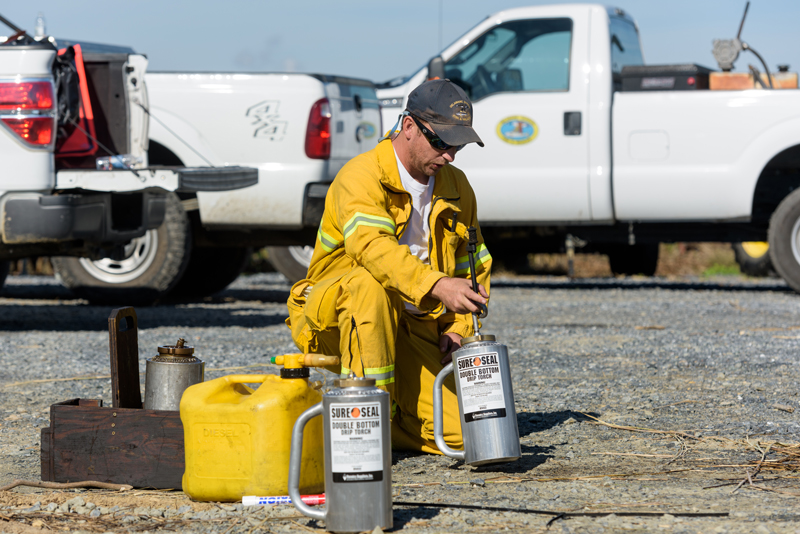

: youtube.com/watch?v=2V2ZP2a9Qxc
Prescribed Burn
Photos by Evan Krape and Kathy F. Atkinson | Video by Jason Hinmon January 10, 2018
UD students learn from alumni wildlife managers on field trip
Students in Jeff Buler’s Wildlife Habitat Management class saw techniques they learned in class when they travelled to the Cedar Swamp Wildlife Management Area near Smyrna to see a prescribed burn led by former University of Delaware students who now work for the Delaware Department of Natural Resources (DNREC) Division of Fish and Wildlife.
Buler, associate professor of wildlife ecology in UD’s College of Agriculture and Natural Resources, said that this is the sixth year he conducted the trip for his class. The 42 students who went got to learn how prescribed burning is used to manage grassland habitats, where technicians intentionally burn grassland fields to set back succession—the process by which a grassland becomes a forest—and keep woody plants from encroaching.
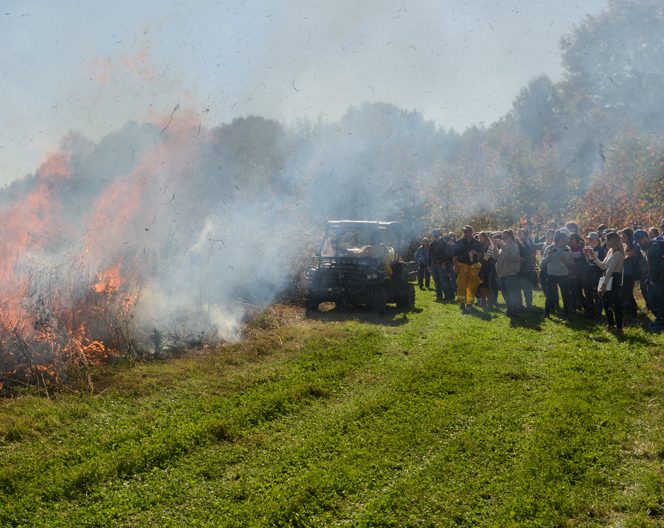
“It also helps to enhance the growth of those early successional plants,” Buler said. “One of the challenges they have is that the grasses are growing at too high a density so they are also using that burn to help reduce the density of the grass. If they get too dense they aren’t providing as good a habitat for wildlife.”
Prescribed burns are more prevalent in other parts of the country, such as the Midwest, where grasslands are the dominant habitat type, so it was a great opportunity for the students to see the management technique first hand.
“On the prescribed fire trip, they get to actually see one of these management techniques in action,” Buler said. “What’s nice is that the technicians show them all the equipment, they talk about the process of getting permits to be able to burn, to get the permission to burn, and all the planning that goes into it. Then, of course, we go out and see the burn. For many of them, it’s the first time that they’ve witnessed a prescribed burn.”
Maya Hall, a senior in the College of Agriculture and Natural Resources, said that it was a great learning experience to be able to witness a prescribed burn first hand.
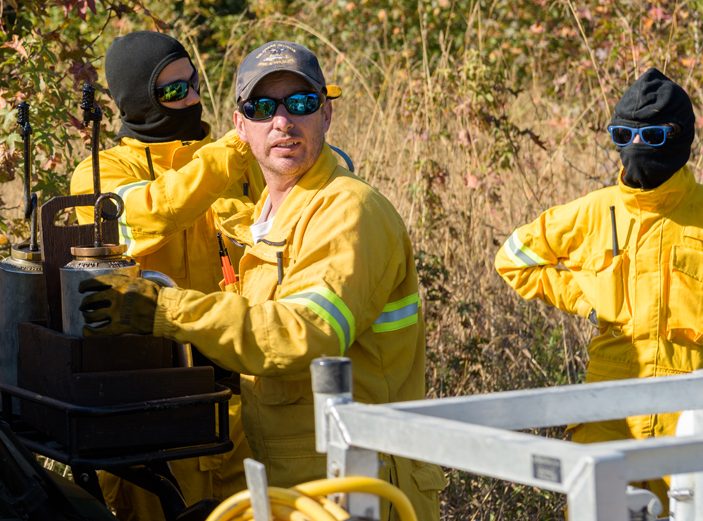
“It’s really easy to see how quickly a fire can escape from a land manager’s control and how quickly the flames increased,” Hall said. “I was really impressed with how quickly the brush caught fire and how easily they managed it because they sprayed all the water and they kept going back and forth and really keeping it safe. It was really neat.”
The annual field trip is one of the most popular aspects of Buler’s class because the students not only get to see a wildlife habitat management technique but they also get to interact with wildlife biologists and industry professionals. In this case, they spoke with professionals who also have experience with UD.
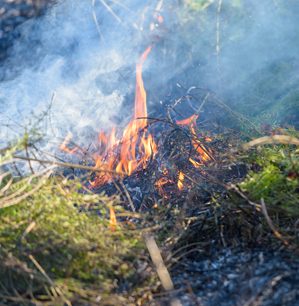
“What’s nice is that it’s kind of two-fold,” Buler said. “It’s part professional development but it’s also educating them about wildlife first hand in the field. What I like about this trip in particular is that not only are the students meeting other professionals but many of them were students that came through this department. It reinforces that you can get a job. It might be that they take advice from these former students to heart more if they’re hearing advice from professionals they connect with.”
Hall said that it was by far her favorite field trip of the several taken during the fall semester.
“I think it’s wonderful,” Hall said. “To be able to see things firsthand and see how things are run really opens my eyes and helped me figure out what’s out there and what people are doing in the real world to help conservation and to help habitat management.”
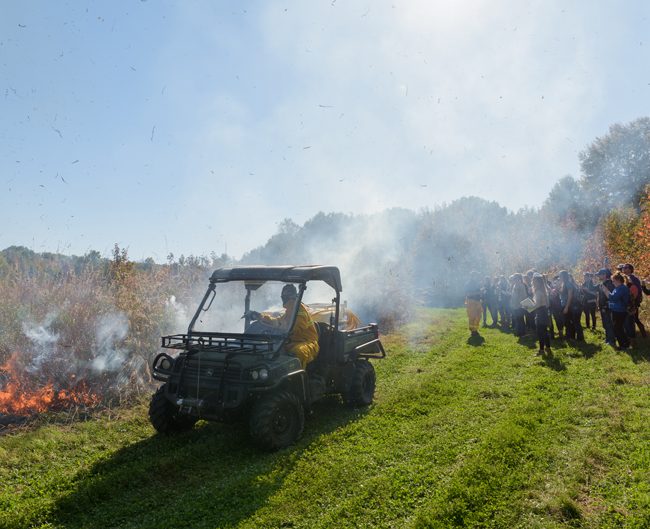
Buler said that two alumni in particular, Eric Ludwig, New Castle County Regional Manager for DNREC, and Craig Rhoads, Environmental Program Manager for DNREC, have hired past students that took the course when they were at UD.
Ludwig said that it is important to make these contacts in the field of wildlife management.
“With networking, especially in the wildlife management field, it’s a very small community so the more people you know in the field, the better off you’ll be,” Ludwig said. “A lot of times it’s more of who you know than what you know in our field and that greatly helps you in finding a job and finding a position later down the road.”
In addition to visiting the Cedar Swamp Wildlife Management Area, Buler’s class has traveled to areas to view other wildlife habitats as well, such as the John Heinz National Wildlife Refuge at Tinicum in Pennsylvania and Bombay Hook National Wildlife Refuge.
Contact Us
Have a UDaily story idea?
Contact us at ocm@udel.edu
Members of the press
Contact us at 302-831-NEWS or visit the Media Relations website

